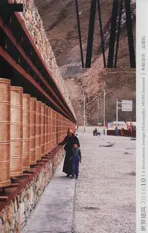安徽医科大学第二附属医院,安徽,中国
2016-11-14孟建民,邢立华,侯军等
安徽医科大学第二附属医院,安徽,中国
该医疗区是合肥安徽医科大学第二临床学院校园规划扩展的一部分。通过医疗区规划设计竞赛的机遇,进一步整合原有肌理,改善原有校园空间景观环境的不足,为整个校园带来一个高潮的结尾。在医疗区的规划中引入了两条景观绿化带:水平绿化带区分教学区与医疗区;竖向绿化带强调学校的主轴线,设计成林荫花园。这条景观绿化带一侧布置医疗综合楼,另一侧布置传染楼和辅助用房。主广场为门诊、行政办公及探视参观人流服务,次广场为急诊、急救人流服务。
医疗综合楼分为门诊部、医技部、住院部、行政办公四大部分,每部分功能单元都有属于自己的共享空间。16m宽的“医院街”联系起教学楼与医疗综合楼。鲜花店、礼品店、书店、超市及美容等公共服务设施布置在“街”两侧。“医院街”接待病人和访客,由此可以到达任何想去的地方。其西侧3个性格迥异的方形共享空间成为医疗综合楼的最大特色:一个4层高的共享中庭、一个种植绿化的屋顶花园、一个宜人的园林景观内院。主入口东侧的行政办公楼与住院部之间有一个开敞的景观水池广场,与门诊中庭形成连续的视觉景观。住院部一层设有咖啡厅,这里将成为病人、访客、医生的交流中心。人们在沿着“医院街”穿越建筑时会经历一系列层次丰富的空间变化。这些人性化的公共空间设计强化了医院的社区化功能,好像一个微缩城市。
通过医院街及3个方形院落空间组成的公共空间体系把其他各功能体块有机地联系成为一个整体。我们把医技分成两个部分。一部分是与门诊密切的常规科技医技部门,如临床检查、功能检查,设置在公共空间体系的西侧。另一部分为高科技医技部门,如影像中心、手术部,共同布置在公共空间体系的东侧。住院部由于要考虑两期分布设成两个相对独立的护理单元楼,把与手术部联系不密切的病区移至二期住院大楼,血液净化中心及放射性同位素治疗区在一层北侧分别设有独立出入口。同时,由产休部、分娩部、新生儿部组成的产科设置在二层,与三层的手术室、重症监护ICU形成垂直便捷联系。康复运动中心、病理检验与信息中心安排在住院部四层。在西侧裙房设置了带有独立屋顶花园的VIP病区。
项目信息/Credits and Data
设计团队/Design Team: 孟建民,邢立华,侯军,王丽娟,吴莲花/MENG Jianmin, XING Lihua, HOU Jun,WANG Lijuan, WU Lianhua
用地面积/Site Area: 126,000m2
建筑面积/Floor Area: 122,000m2
设计时间/Design Time: 2004



1 总平面/Site plan
2 外立面/Facade
3 医院街/Te Promenade
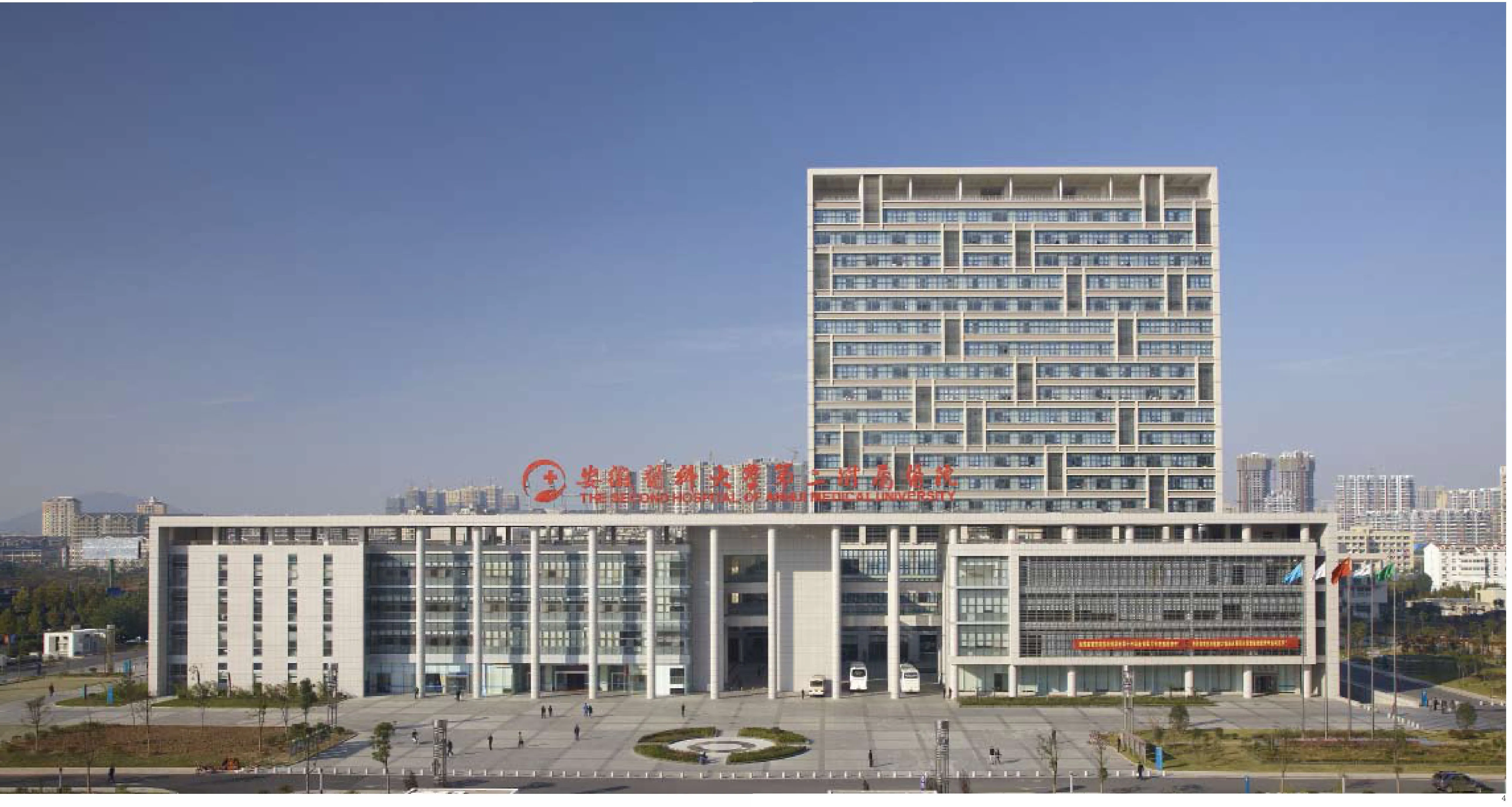
4 外景/Exterior view
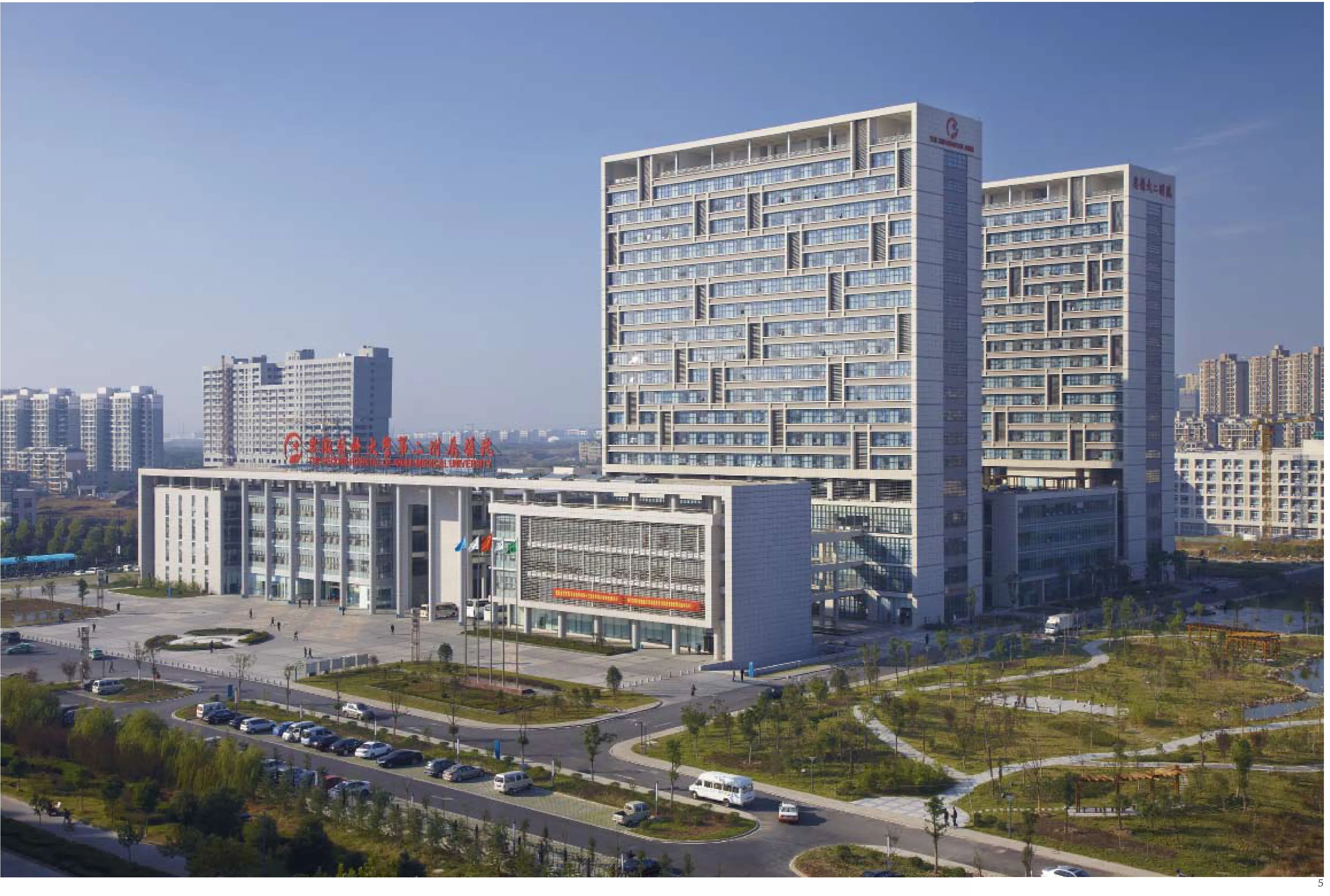
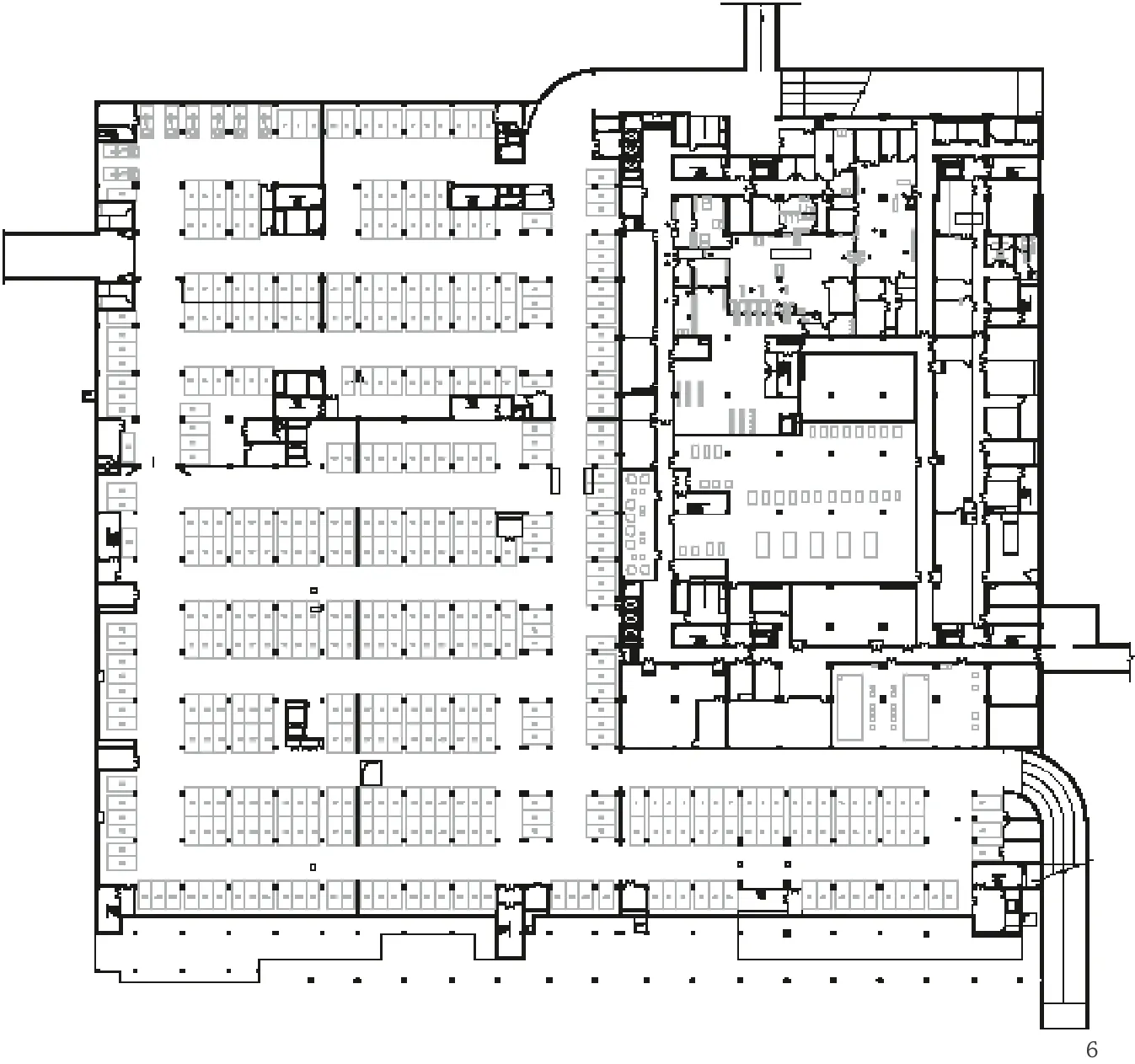
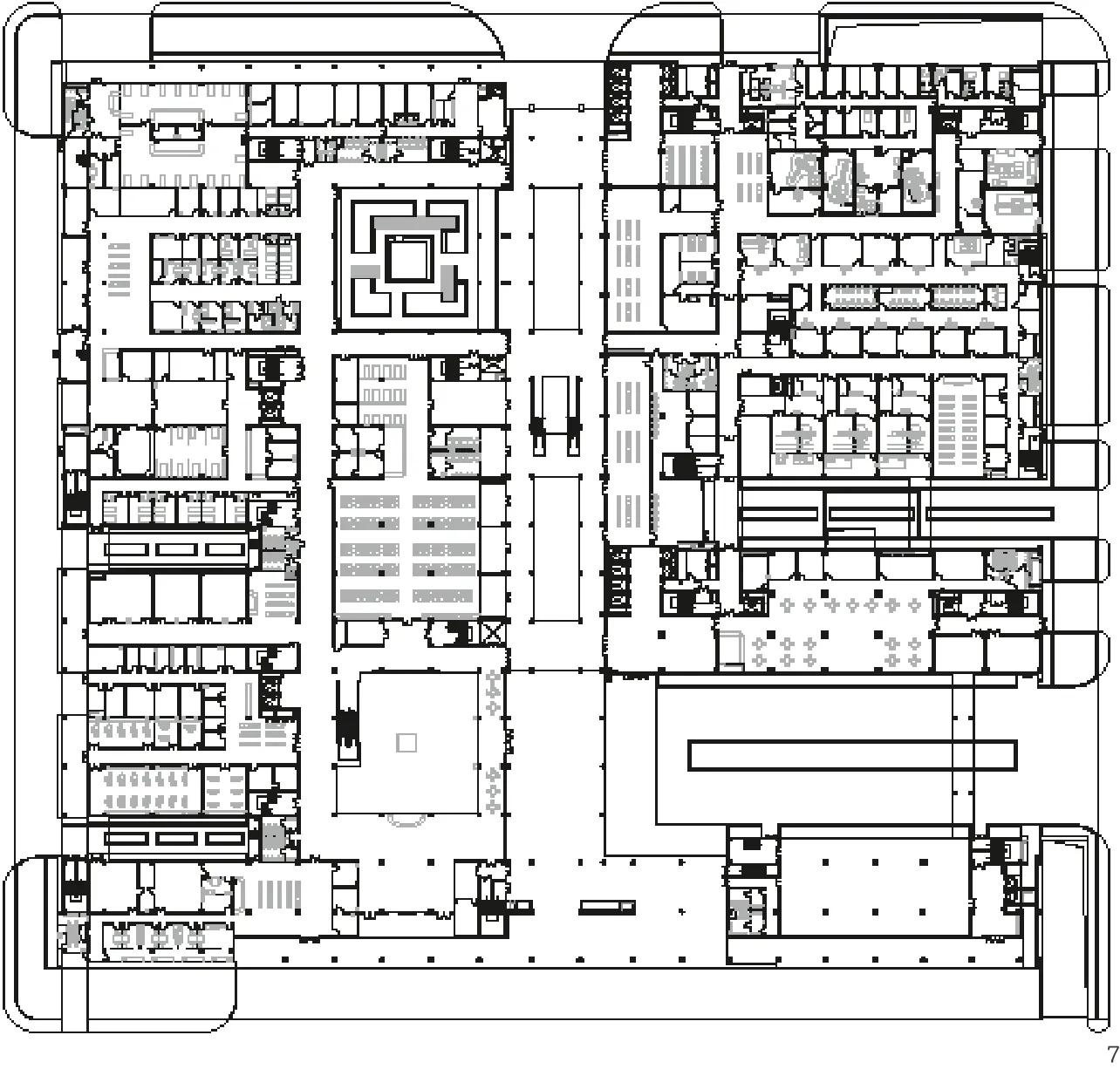
5 外景/Exterior view
6 地下一层平面/Floor B1 plan
7 首层平面/Floor 1 plan
Te medical area is an extension to the original campus of the Second Clinic School of Anhui Medical University. Te design competition for this extension helps the campus to further integrate the medical system into its architecture and improve the spatial quality of the campus. Two green belts are introduced to complex: the horizontal green belt separates the education zone from the medical zone;the vertical one, designed to be a shade garden,highlights the university's main axis. On one side of the vertical green belt situated the medical complex and on the other side, the infection building and the subsidiary quarters. Te main square consists of walk-in clinics, administrative ofces and reception for inpatient visitors, while the secondary square serves as an emergency diagnosis and circulation.

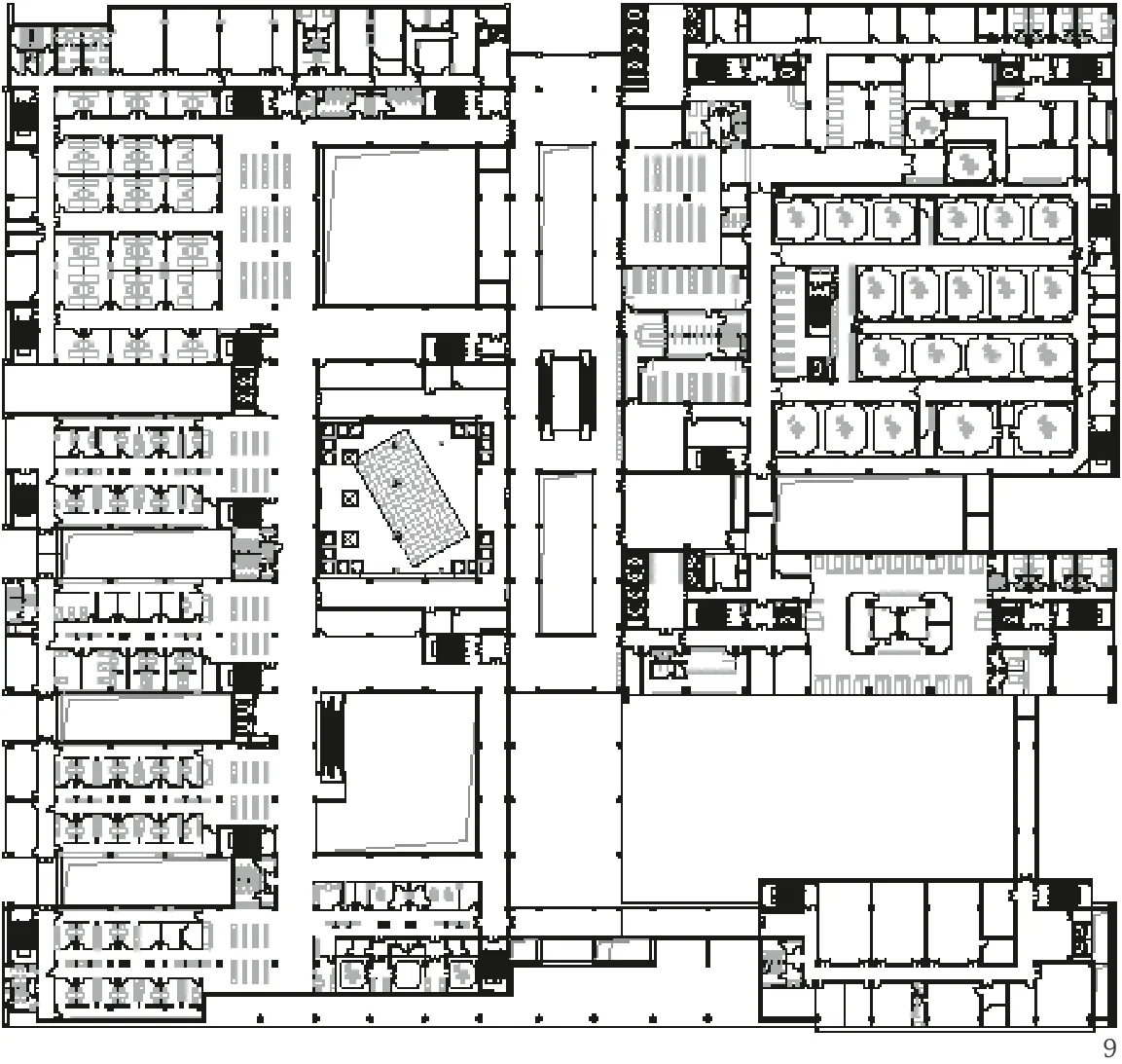
8 二层平面/Floor 2 plan
9 三层平面/Floor 3 plan
The medical complex has four major parts: clinics, technical department, inpatient department and administrative office. Each part has its own communal space. Te 16m wide medical Promenade connects the education building with the medical complex. Flower shops, gift shops, bookstores,supermarkets and beauty salons are lined up on both sides of the street. Te Promenade is designed with an open circulation allowing both visitors and patients to move freely through the space. On the west part of the Promenade, there are three rectangular communal spaces, each with distinct configuration. They are the main features of the Promenade: a four-story communal atrium, a roof garden, and a pleasant inner courtyard. Located to the east of the main entrance, between the administrative ofces and the inpatient building, a spacious fountain plaza is designed and is visually connected with the clinics' courtyard. Traversing through the Promenade, one would experience its sensuous spatiality through layers of architectural elements. The communal spaces with focus on the experience of the visitors enhance the sense of community in this healthcare facility, essentially turning the hospital into a miniature city.
The Promenade and the three rectangular communal spaces united the rest of the programs to an organic whole. The technical department isdivided into two: the clinic-related conventional technical department branch which includes clinical examination and function testing unit is placed at the west side of the public space; the high-tech branch including media center and operating rooms, is placed at the east. The inpatient department is divided into two relatively independent nursing units, with the two surgical developmental stages taken into account. Te ward area which is not so closely related to the surgical department is moved to the phase 2 inpatient building. Blood purification center and radioisotope treatment center are on the north of the First Floor, each with independent entrances and exits. Obstetrics, including the department of maternity in waiting, labor department and the neonatal department, is on the second foor allowing direct access to the surgical department and the ICU on the Tird Floor. Rehabilitation sports center,pathology and information center are on the Fourth Floor of the inpatient building. The ward zone with independent roof garden for VIP inpatients is located on the west side.
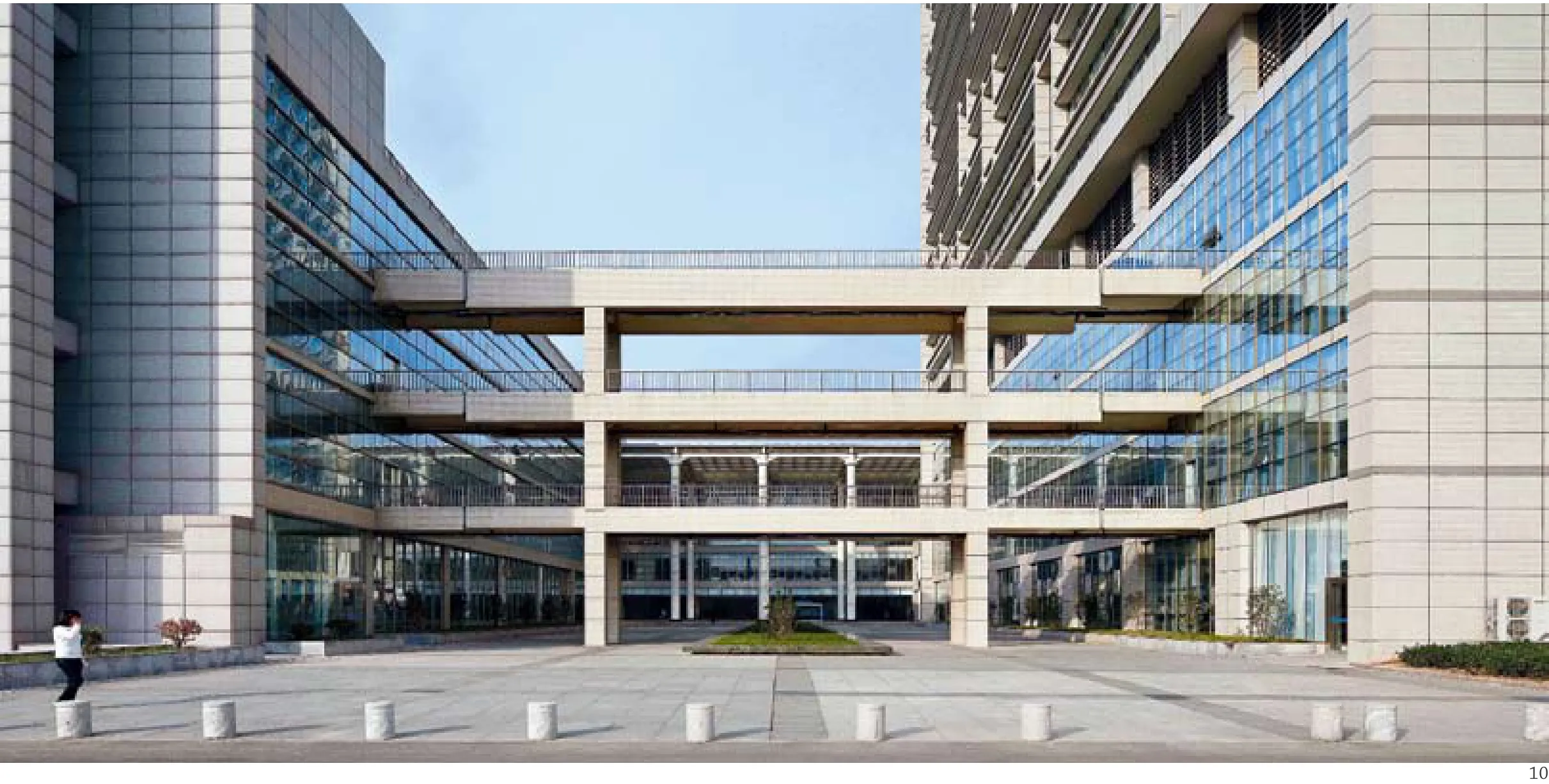
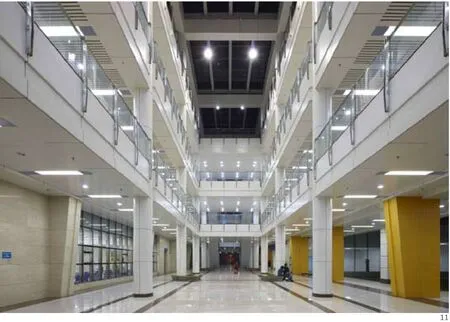
10 外景/Exterior view
11 内景/Interior view
评论
吕志鹏:笔者曾参观安徽医科大学第二附属医院,有一些片面的现场感受。就整体规划而言,其建筑与周围城市肌理相协调,尺度适宜。院前的广场,考虑了大量病人及家属赴诊、等候及休憩的需求。立面设计简洁却不失变化,裙房柱廊构筑了良好的室内外过渡空间。“医疗街”概念的运用弱化了传统医院的紧张体验。超市、商店与餐厅分立两侧,使人们仿佛置身街市,全无医院特有的匆忙与杂乱的气氛。“医疗街”作为医院的主枢纽,串联各主要功能空间,将病患从进入院区起即根据不同需求分流,缓解室内,特别是门诊大厅的交通压力及拥挤状况,且为医护人员和患者提供短暂停留和交流的空间,并为两侧的室内注入自然光。设计的另一大亮点是自然景观的运用。依据循证设计理论,自然元素有显著的疗愈作用。西侧的中庭、庭院、VIP病房的屋顶花园和东侧的水景与绿地为舒缓病患及医护人员的紧张情绪创造了良好的环境条件。医院的各主要功能版块,如手术、影像及ICU等相互位置考虑周到,易达性强。对于如何锦上添花,笔者有几点愚见:单侧病房的设计使医务人员步行距离过长,影响护理效率;在室内适当地运用吸音材料,可部分减少门诊与病房现有的噪音;对于保护病人(特别是急救和手术病人)隐私,可考虑台前和幕后的做法。诚然,这些都与政府政策、甲方的理念、预算、管理和运作密切相关,往往不是建筑师能左右的。综上所述,安徽医科大学第二附属医院设计不失为近10年来在“医院城”和“医疗街”理念的实践上少有的佳作。
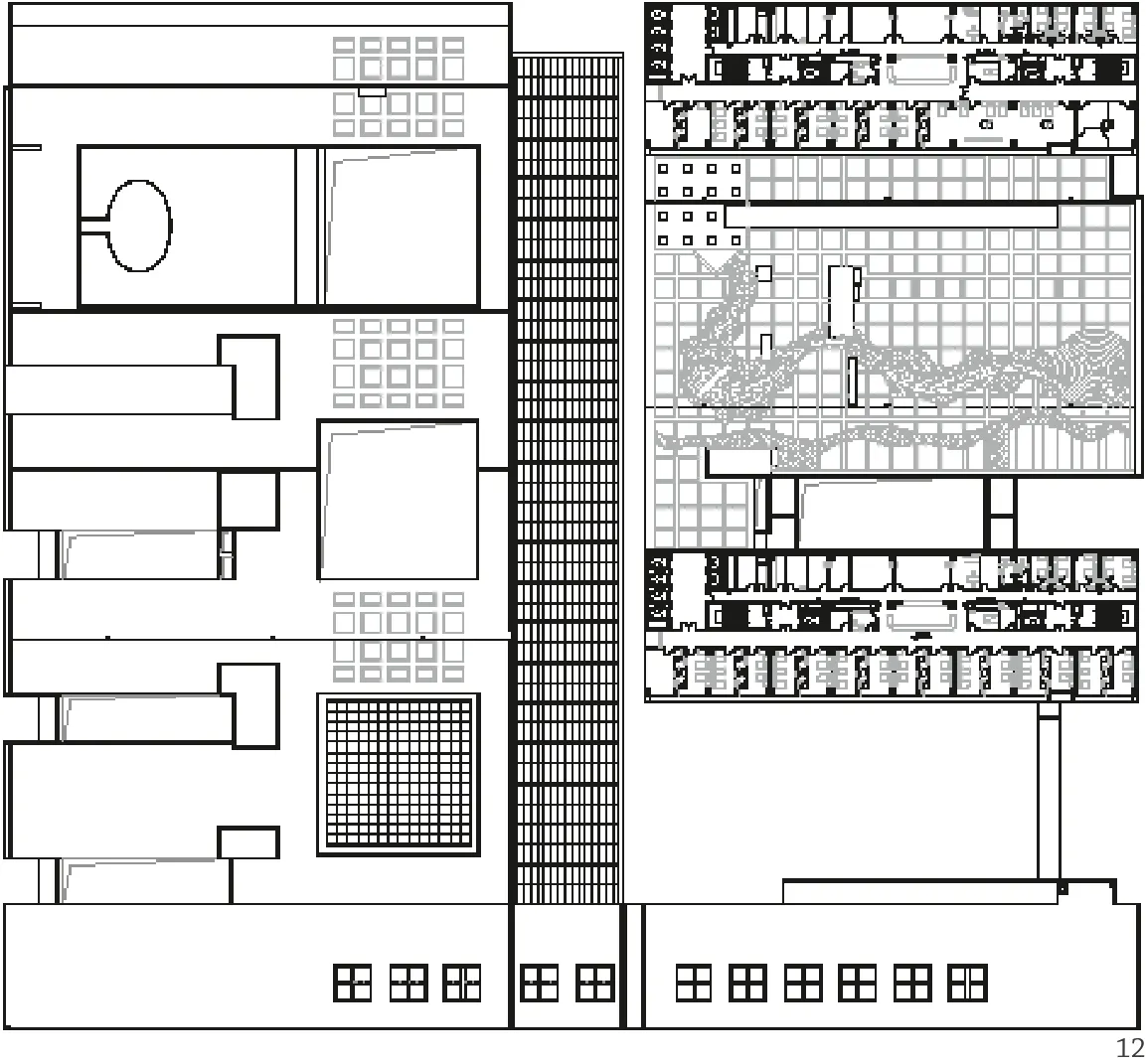
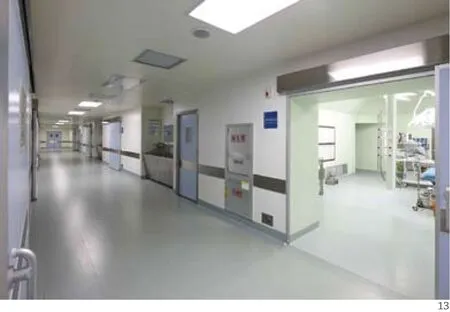
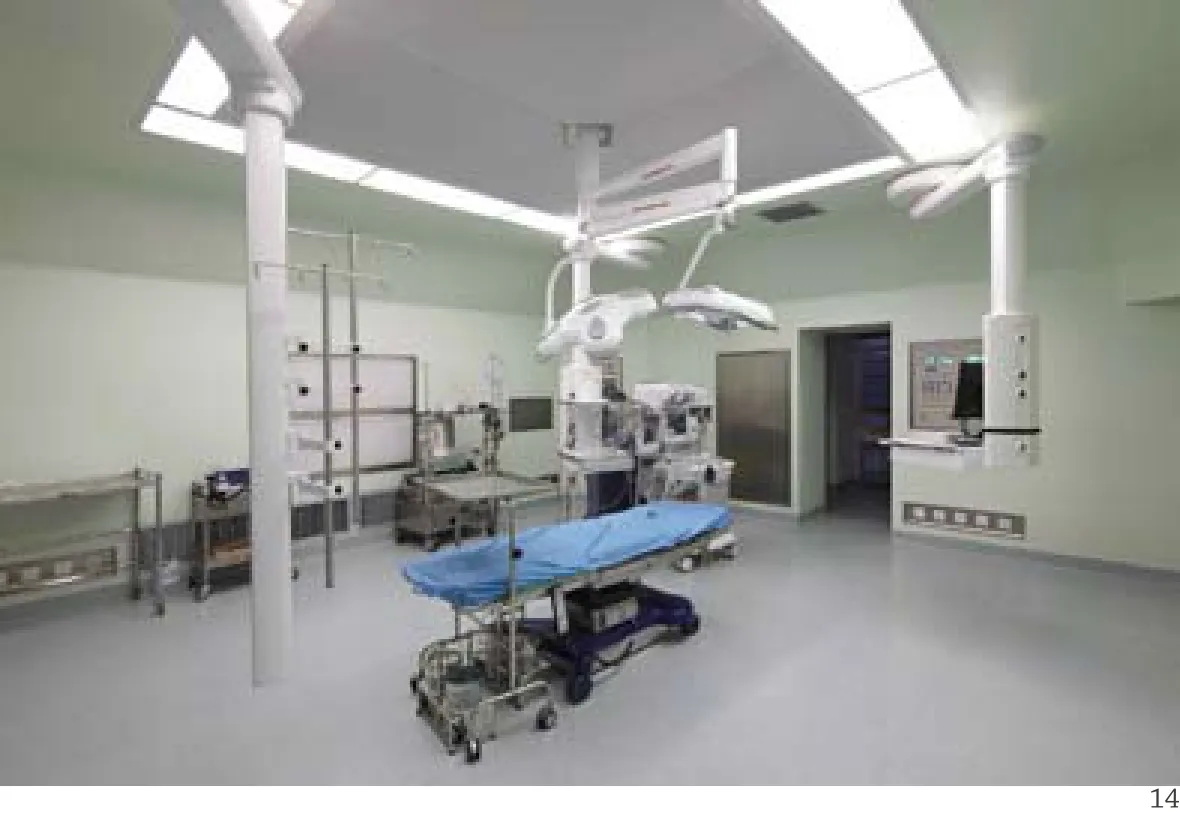

12 六层平面/Floor 6 plan
13.14 内景/Interior views
15 外景/Exterior view
Comments
LYU Zhipeng: I have visited the Second Affiliated Hospital of Anhui Medical University and got some feelings of my own. In terms of its overall planning,the building is harmonious with the surrounding urban fabric, and the scale is suitable as well. The plaza in front of the hospital meets the demand from a large number of patients and their family members going to consultation. The façade design is simple but full of change. The podium colonnade forms a nice transition between indoor and outdoor space. The application of "medical street" concept has mitigated the traditional hospital experience of tension. In fact, supermarket, shops and restaurants are located on both sides of this "medical street" to bring some market-like atmosphere which is totally diferent from such rush and chaos as usually seen in a hospital. As the hub of this hospital, the "medical street" not only connects the main functional space,but also separates patients according to their needs once they entered the hospital so that indoor trafc,particularly the outpatient service hall congestion can be alleviated. In addition, the street provides a short stay and exchange space for medical staf and patients. Moreover, it brings natural light to rooms on both sides. Another highlight of this design is its application of natural landscape. According to the theory of evidence-based design, natural elements had significant healing effects. Atrium, courtyard,and VIP roof garden on the west side, together with the fountain and green space on the east side, create favorable environmental conditions to soothe the tension from both patients and medical staf. Tose major functional areas of the hospital, including surgery, imaging and ICU, are strategically located and highly accessible. Below are a few humble suggestions to make this design even better: first of all, one-sided ward design have extended the walking distance of medical staff, consequently affecting nursing efficiency; secondly, adoption of sound-absorbing materials indoor may partially reduce noise from clinics and wards; finally, onstage and offstage approach might be considered to protect patients' privacy (especially emergency and surgical patients). These are of course closely related to government policies, the Client's ideas,budget, management, operation and usually out of the control by architects. To sum up, The Second Affiliated Hospital of Anhui Medical University is undoubtedly a rare masterpiece in this decade to practice the concept of "hospital city" and "medical street". (Translated by ZHANG Xian)
Te Second Afliated Hospital of Anhui Medical University, Anhui, China, 2008
